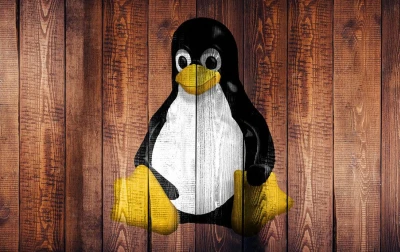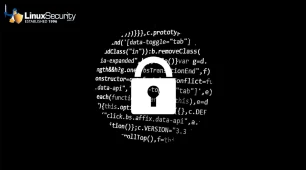
An attacker-friendly vulnerability in Linux systems has been discovered, allowing malicious actors to circumvent the noexec mount flag and execute malicious code on target machines, undermining security principles that restrict executable binaries to designated partitions.
The implications of this threat are profound, especially in environments with stringent security measures. To help you understand and protect against this bug, I'll discuss who is at risk and measures admins can take to secure their systems. Let's begin by understanding this flaw and how it is exploited.
Understanding the Linux ‘noexec’ Mount Flag Flaw
The noexec mount flag allows administrators to make any filesystem non-executable and, thus, prevent binaries located within it from being executed. This feature can help strengthen security in environments with shared or temporary storage, such as /tmp or /dev/shm, which are vulnerable to malicious uploads by setting noexec and theoretically blocking the execution of any unapproved code from these locations.
 A recent flaw allows malicious hackers to circumvent the noexec mount flag to execute malicious code on target systems. This exploit uses fileless execution techniques, allowing executables to run without being written to disk, thus evading the noexec flag. Specifically, memory-backed file descriptors and shellcode injection into processes' memory spaces are employed in this method of attack. Through the memfd_create(2) syscall, an in-memory file descriptor independent of persistent storage can be generated. Process image modification can then be achieved by writing directly to /proc/self/mem to manipulate process memory directly.
A recent flaw allows malicious hackers to circumvent the noexec mount flag to execute malicious code on target systems. This exploit uses fileless execution techniques, allowing executables to run without being written to disk, thus evading the noexec flag. Specifically, memory-backed file descriptors and shellcode injection into processes' memory spaces are employed in this method of attack. Through the memfd_create(2) syscall, an in-memory file descriptor independent of persistent storage can be generated. Process image modification can then be achieved by writing directly to /proc/self/mem to manipulate process memory directly.
Attackers are using this vulnerability to inject shellcode into sections of Bash's .text segment. When waiting for child processes to complete, Bash exposes its instruction pointer via /proc/self/syscall. This makes it possible to target its instruction pointer with shellcode and ensure it executes as soon as the waiting period ends.
Examining the Impact of the Linux ‘noexec’ Mount Flag Flaw
This flaw poses severe threats in various environments, particularly those using the noexec mount flag. Noexec protects web servers operating under strict PHP environments from uploaded payload executions. At the same time, containers that rely solely on Noexec for security are at greater risk if relying exclusively on it as protection. Noexec can help safeguard shared hosting environments with multiple users from potential abuse by any individual user. By exploiting this recent flaw, malicious actors could execute backdoor binaries without engaging the filesystem, leading to unintended code execution. This vulnerability allows attackers to bypass security policies utilizing the noexec flag. Furthermore, it allows attackers to inject and execute code from memory, making them more persistent and further complicating detection and remediation efforts.
Practical Mitigation Strategies for Admins
 Administrators must implement multiple layers of defense by employing restrictions and system-hardening measures to mitigate the risks posed by this flaw. System monitoring using tools like auditd to track suspicious syscall activities like memfd_create or memproc/self/mem is essential, along with memory integrity tools that detect any changes in running processes. Process isolation is also crucial. Linux namespaces help isolate processes further while restricting their ability to access the proc filesystem. Configuring Seccomp filters helps restrict system calls that are available to untrusted applications.
Administrators must implement multiple layers of defense by employing restrictions and system-hardening measures to mitigate the risks posed by this flaw. System monitoring using tools like auditd to track suspicious syscall activities like memfd_create or memproc/self/mem is essential, along with memory integrity tools that detect any changes in running processes. Process isolation is also crucial. Linux namespaces help isolate processes further while restricting their ability to access the proc filesystem. Configuring Seccomp filters helps restrict system calls that are available to untrusted applications.
In addition, access control measures should include tighter access restrictions using SELinux and AppArmor on process memory and sensitive syscalls, along with userspace restrictions to prevent unintended binaries from being uploaded or executed by unauthorized users. Furthermore, mandatory access controls such as disabling memfd_create if not necessary or moving away from common locations like /dev/shm for temporary directories can help to ensure sensitive data remains secure. Finally, keeping the Linux kernel and core utilities updated is crucial in taking advantage of the latest security patches and improvements available through upgrades or updates.
Our Final Thoughts on Combating This Vulnerability
The recent discovery of a vulnerability that bypasses the noexec mount flag through advanced fileless execution techniques requires admins' immediate attention. They must employ multi-layered defense measures, including monitoring syscalls, process isolation, access control, and regular updates to secure their systems against this emerging threat. Given the rapidly developing landscape of cyberattacks, such vulnerabilities underscore the necessity of constant vigilance and proactive security measures in protecting vital Linux systems.
As hackers become more adept, comprehensive security solutions become increasingly crucial. Understanding how exploits work and establishing robust defenses against them will go a long way toward protecting systems against such sophisticated exploits.



















